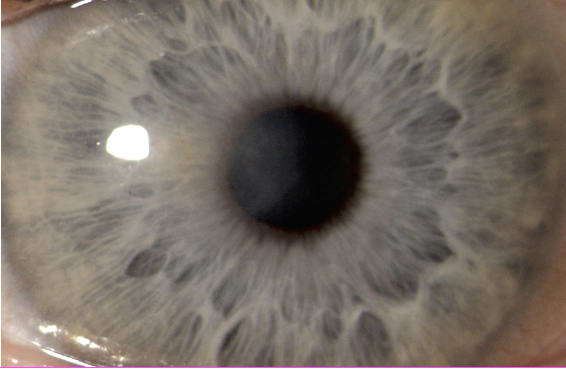Scleral lenses are often prescribed for visual rehabilitation with central corneal scars. When corneal scarring is unilateral, several factors should be considered when deciding if both eyes may benefit from scleral lens wear. This case report discusses the advantages of fitting scleral lenses bilaterally for a patient with unilateral central corneal scar.
Case Description
A 55-year-old Caucasian female presented to the clinic for specialty contact lens consultation. The patient complained of unsatisfactory vision and comfort with current contact lens wear and a history of central corneal ulcer in the right eye in 2018, which resulted in a central corneal scar OD. She presented with a GP lens OD and a single vision SCL OS in a monovision setup (OD dominant). She prefers to be glasses-free during the day and improve her distance vision with new contact lenses. She has long-standing dryness with contact lens wear, especially towards the end of the day and was using nonpreserved artificial tears twice a day over her contact lenses with minimal relief.
Entering distance visual acuity (VA) with current contact lenses was 20/20 OD, 20/40 (PH 20/20) OS, and 20/20 OU; near VA at 40cm was 20/80 OD, 20/25 OS, and 20/25 OU.
Subjective refraction was -1.25 -5.50 x 089 20/20- OD, and -3.00 -1.25 x 005 20/20 OS with +1.75 Add. HVID was 11.5mm OD and 11.7mm OS. After removing contact lenses, slit lamp examination of the right cornea revealed a 3.5mm x 3.5mm corneal scar with significant stromal thinning, involving the central and temporal mid-peripheral cornea (Figure 1). There was no corneal irregularity on the left cornea. Nasal and temporal pinguecula were noted on the conjunctiva of both eyes. After instillation of sodium fluorescein, there was trace punctate staining within the central corneal scar OD, as well as 1+ diffuse superficial punctate keratitis (SPK) over lower 1/3 of both corneas.

All specialty contact lens options were discussed, and we recommended fitting the right eye with a scleral lens for visual rehabilitation. We also recommended fitting the left eye with a scleral lens for dry eye relief and the ability of adding multifocal optics onto both scleral lenses.
The first pair of single vision distance Onefit scleral lenses (CooperVision Specialty EyeCare—Blanchard) was ordered. A diameter of 14.6mm was chosen to minimize lens interaction with the nasal and temporal pinguecula. After confirming that fit and distance vision were satisfactory with the single vision scleral lenses, multifocal optics were added.
Discussion
The patient reported having clear and comfortable vision with all-day multifocal lens wear, with significant subjective improvement in distance and near vision. She also stopped using use artificial tears, as she had no dry eye sensation with scleral lens wear. She was overall very satisfied with the final fitting outcome.
Conclusion
Scleral lenses are an effective tool of visual rehabilitation with irregular cornea, as seen with the right eye in this case report. In addition to the eye with central corneal scar, prescribing scleral lenses bilaterally allowed for the incorporation of multifocal optics and provided dry eye relief. Despite unilateral corneal irregularity, practitioners should carefully consider if a patient may benefit from bilateral scleral lens wear.
Sharon Qiu, OD, MS, is attending optometrist and supervisor for 4th year interns at the University of Waterloo Contact Lens and Myopia Control Clinic in Waterloo, Ontario, and is pursuing a PhD in Vision Science at the university's Centre for Ocular Research & Education. She has no disclosures.



